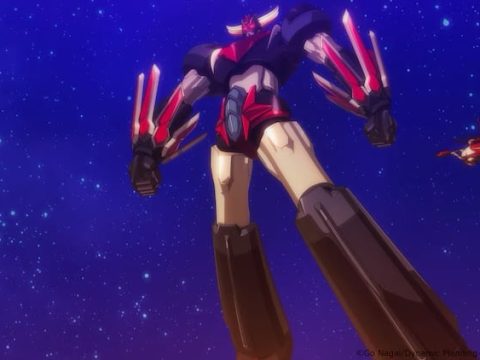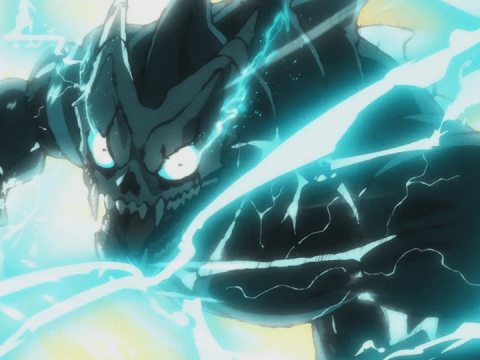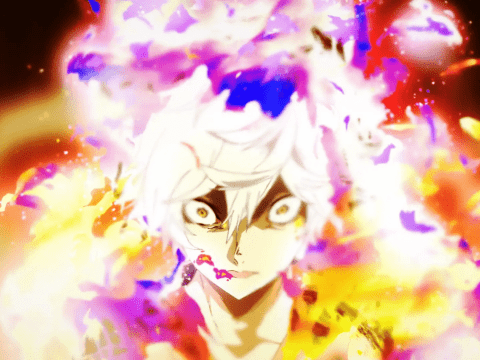The best part of year is upon us once more, still one of the few times I don’t feel any jealousy of those living out west. I need a drastic change in climate to perfectly highlight the frights of October; dark, chilly nights to accentuate those bumps and thumps. However, being that I’m no longer as impressionable and easily stoked a lad as I once was, I still require that final ingredient: macabre media that knocks those Halloween puns and howlingly heinous alliterations right out of my noggin. What better way to kick off this celebration of all things dark and dreary than Go Nagai’s Devilman.
Devilman may not register much more than a blip on the radar of today’s fanbase, but it was once a name to be both feared and revered. Nagai gave birth to this hombre del diablo in 1972, in response to Toei Animation’s request for an animated version of Demon Lord Dante that could be made a little more suitable for viewers. Only in Nagai’s world would this result in Devilman—just imagine if someone even so much as suggested the title alone as one for children in the US—and the series began running on television a mere month after his manga started its run in Shonen Magazine.
The runs of both the anime and manga were pretty much concurrent, with the former running for 39 episodes, and the latter eventually collected in five tankobon. Devilman weaves a world that was once dominated by powerful demons, stomping about on the surface and waging their own battles against one other, with no thought of the vile human menace that would rise one day. It wasn’t long after our arrival that the demons met an awful fate, doomed to an icy prison for all eternity… or at least until the ice melts, that is.
That’s where Akira Fudo comes in and, for the sake of brevity, we’ll just be focusing on the way he merges with Devilman in the anime version of the story, because both are distinctly different. Devilman earns the honor of being the first demon out the door on a conquest to destroy the Earth, and how exactly was he chosen for this task, you ask? Naturally, only a royal rumble against competing demons, one of which is a giant sludge-like monster, could grant one such an honor. As they’re about to throw down, Akira Fudo is mountain climbing with his father in the Himalayas, and they just so happen to be in the worst spot imaginable: right smack dab in the middle of this demonic tussle.
The battle is of the no holds barred sort, setting the devil-be-damned tone of the series’ action, and eventually leading to Devilman’s possession of Akira’s body. It is through this temporary vessel that he plans to infiltrate our society and spread the seeds of chaos, and with a whirl of snowflakes, Akira is blasting his motorcycle home, his father’s body presumably left to freeze in the mountains.
It’s apparent from the start that taking over the world would be a cinch for Devilman. Just observe his hulking, Kaiju-sized frame if you don’t believe it. Plans start to derail early on, however, when Devilman falls for Akira’s friend Miki, with whom he’s currently staying. She wins him over quickly, unaware of what really lies inside Akira’s body, and what’s making him into such a wild youth. Her power over him immediately raises concern within the demon ranks. Why isn’t he raising Hell and cursing everyone and bringing fire and brimstone upon the Earth?
The truth is, despite the fact that he can transform into a towering monster at any given moment, The human world has already wooed Devilman into an odd sort of submission. Specifically, Miki’s influence curtails his evil ambitions, and thus the demons have no choice but to remove this female roadblock.
There’s always something strange going down in the world of Devilman, especially when it comes to taking on the various demons that plague our freshly-defected antihero. Many of them wonder what could drive a beast of his power to long for things of the human world, like when the winged she-beast Siren hooks her wormy antennae into Devil just to probe his memory and find out why he fell for Miki. Did his possession of Akira result in a merging of both body and mind, thus leaving Devil with less control than he thinks? Or is he, now on the same level as those the demons loathe, starting to finally understand humans?
Maybe some of these questions could be explored more thoroughly in the manga, but it’s all pretty straightforward as aired on television. Akira is Devilman, Devilman is Akira, and all Devilman wants to do is protect Miki. When you put it that way, their evil plan to eliminate this female distraction of his is actually a pretty good one, or it would be if they ever had a chance of succeeding beyond their bumbling weekly efforts.
The monster of the week formula may not have been anything new to anime in 1972, but not many shows play out in such a distinctly tokusatsu manner as Devilman. Everything about the formula is in place right where it should be, making each episode a pulse-pounding exercise in waiting for everything to suddenly go live-action. It’s like an extension of the ’76 series Pro-Wrestling Star Aztekaiser, which took basically anything that would have been remotely time-consuming or problematic to pull off in live-action and animated it.
Though we never got to see how this would have played with actors back in the day (and let’s not bother talking about Hiroyuki Nasu’s limp 2004 theatrical effort), one can still see it in everything from the episode openings—which briefly tease the demon set to shake down the devil this week—to the rousing return of the theme song during each climactic fight. Animated balsa wood structures are the casualties of stories-high wrasslin’, and the bad guys always have someone else lined up to give it a go at the end of each chapter. Kind of makes you want to put Devil in the Thunderdome with the supersized Japanese hero of your choice and see which one emerges.
Just because Devilman shares quite a few things in common with choice children’s programming doesn’t mean his wings (or other extremities, for that matter) have been chopped off. How many times has Ultraman fought for his life in a lake of magma-hot blood, for instance? If ever there was a show aimed at the kiddies with more sinister overtones, well, it was probably also a rocket from the brain of Go Nagai.
Unfortunately, the only way to watch the original Devilman anime in English at this point ventures into the realm of terribly subtitled Hong Kong bootleg DVDs. This may be okay to anyone that prefers their dialogue to read on an almost unintelligible level—with every other line comparable to “I did a dream… but I dreamt a strange thing” or “I pissed on my pants”—but everyone else is better off wishing for an unlikely future in which this is localized from beginning to end.
The 1987 and 1990 OVAs are a different story entirely, both holding a tighter embrace on the darker tone of the manga. They would also be more likely to grab newer anime fans, since the ’70s Devilman cartoon isn’t exactly top of the line animation, and would probably be ignored by today’s crowd as simply being “too old.” Perhaps we can get into those in detail on another day—ideally whenever someone decides to rerelease them—but I will say one thing. In comparison to these ’70s rubbersuit superheroics, the OVAs bring to mind Dan Aykroyd at the end of The Twilight Zone movie: “You wanna see something really scary?”







